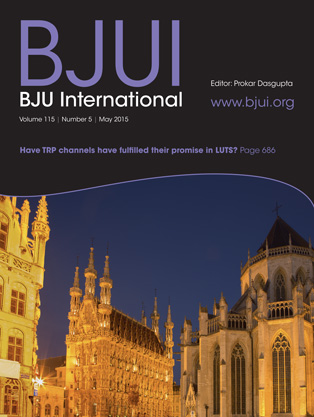Article of the Month: Have TRP channels fulfilled their promise in LUTS?
Every Month the Editor-in-Chief selects the Article of the Month from the current issue of BJUI. The abstract is reproduced below and you can click on the button to read the full article, which is freely available to all readers for at least 30 days from the time of this post.
In addition to the article itself, there is an accompanying editorial written by a prominent member of the urological community. This blog is intended to provoke comment and discussion and we invite you to use the comment tools at the bottom of each post to join the conversation.
Finally, the third post under the Article of the Month heading on the homepage will consist of additional material or media. This week we feature a video from Dr. Wouter Everaerts, discussing his paper.
If you only have time to read one article this week, it should be this one.
Transient receptor potential channel modulators as pharmacological treatments for lower urinary tract symptoms (LUTS): myth or reality?
Transient receptor potential (TRP) channels belong to the most intensely pursued drug targets of the last decade. These ion channels are considered promising targets for the treatment of pain, hypersensitivity disorders and lower urinary tract symptoms (LUTS). The aim of the present review is to discuss to what extent TRP channels have adhered to their promise as new pharmacological targets in the lower urinary tract (LUT) and to outline the challenges that lie ahead.
- TRP vanilloid 1 (TRPV1) agonists have proven their efficacy in the treatment of neurogenic detrusor overactivity (DO), albeit at the expense of prolonged adverse effects as pelvic ‘burning’ pain, sensory urgency and haematuria.
- TRPV1 antagonists have been very successful in preclinical studies to treat pain and DO. However, clinical trials with the first generation TRPV1 antagonists were terminated early due to hyperthermia, a serious, on-target, side-effect.
- TRP vanilloid 4 (TRPV4), TRP ankyrin 1 (TRPA1) and TRP melastatin 8 (TRPM8) have important sensory functions in the LUT. Antagonists of these channels have shown their potential in pre-clinical studies of LUT dysfunction and are awaiting clinical validation.






